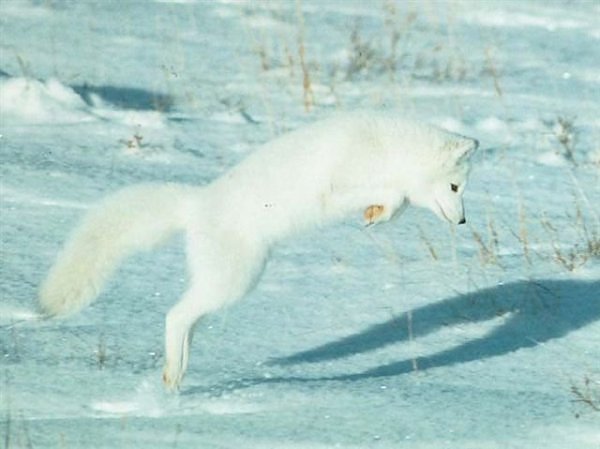How does evolution change DNA?
2 Answers
Mutations in the genotype give rise to variations in the phenotype and natural selection "picks" the individuals with the most adaptive features to survive and thrive in a particular environment..
Explanation:
Variations in DNA can occur by a number of mechanisms, including mutations by the chemicals or radiation, or lateral gene transfer and other ways.
When an individual reproduces with a mutation, this slightly altered genome gets passed on to the offspring and produces certain phenotypical traits (say, white fur coloration in an Arctic fox). If this white color is an advantage in the Arctic for the fox (which it is because it allows foxes to be camouflaged and sneak up on their prey) then this trait will be adaptive and will spread to all foxes after many generations. After awhile, all Arctic foxes will have this white fur trait by natural selection and this will become the continuing evolution of Arctic foxes.
But if the environment changed, to say less snow and more bare ground (which may be happening due to global warming), having a white coat may not longer be adaptive (prey could see you coming). A random gene variation that produces a dark brown coat might become adaptive - white coat foxes would die out - brown coats might survive and thrive. But, the foxes run the risk of going extinct if this brown fur phenotype can't be "found" in the genome fast enough or the environment changes too quickly.

Evolution does not change the DNA, evolution is the result of changes in the DNA.
Explanation:
A mutation can change the DNA. The change in the DNA results in a different form or variety of the animal or organism. If the new variety is better adapted to its environment that variety will survive and become the dominate population.
The foxes of North America are found in different varieties the grey fox, the red fox and the arctic white fox. Most likely the DNA varieties existed in the population. As the foxes moved north into the arctic regions the white DNA varieties were favored over the other varieties by natural selection. These genetic shift is sometimes called genetic drift causing the an evolutionary change.
The question is can random mutations in the DNA result in increased complexity and information required by Descent with Modification, (Darwinian Evolution)

